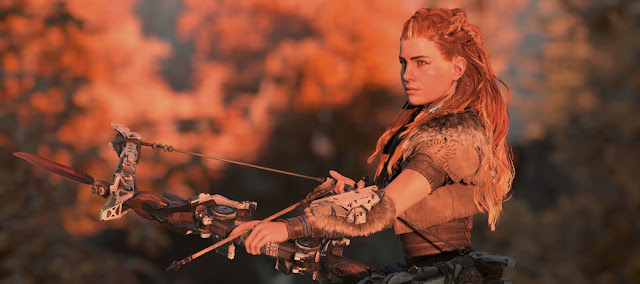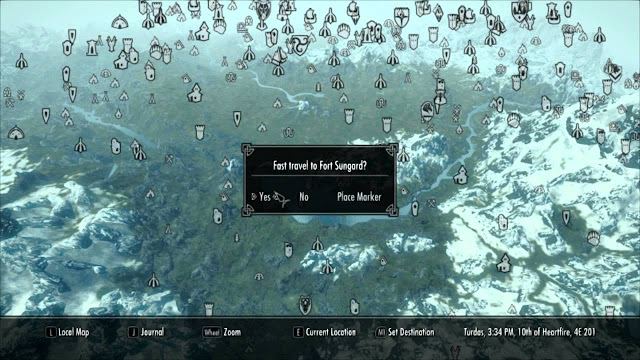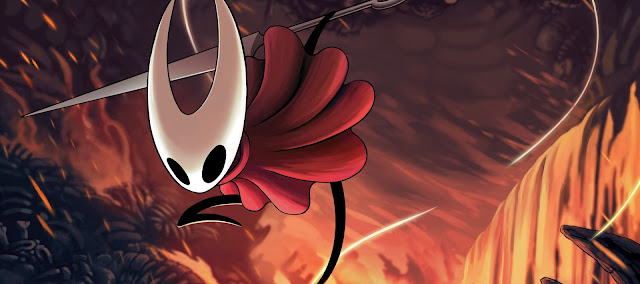Uncharted: Drake's Fortune (Review)
Uncharted: Drake's Fortune laid the stepping stones for Naughty Dog's penchant of creating narratively driven 3rd person action-adventure games. Nathan Drake's debut adventure is an expertly crafted and linear adventure that takes the player on a rich and realised journey in pursuit of hidden treasure. Coupled with explosive gunfights and light platforming that sadly always tries to be more than what it should be, Uncharted: Drake's Fortune is a great game that occasionally stumbles due to flawed design choices.
Uncharted: Drake's Fortune tells the story of adventurer, treasure hunter, and mass murderer Nathan Drake in his search for the fabled treasure of El Dorado along with journalist Elena Fisher and friend Victor Sullivan, more lovingly known as Sully. After discovering Sir Francis Drake's coffin that was buried at sea almost 400 years ago, Nate and Elena come across Sir Francis Drake's diary which leads them on a quest across Panama, the Amazon rainforest, and an undiscovered island in the Pacific Ocean to find the hidden treasure of El Dorado that Sir Francis Drake was after.
On the surface, this may seem like a classic and cliche tale of 3 adventures who sought treasure of enormous wealth, and it mostly is. Nathan Drake and Victor Sullivan are obsessed with uncovering this secret treasure, and their attempted treasure hunt puts their lives and even Elena's at enormous risk. Their minds become telescopes, zoomed in on a treasure that they can't even be sure actually exists. The tale of treasure is rather simple here, and sadly Naughty Dog wasn't able to craft a narrative in this adventure that made me want to find El Dorado and the treasure that Nathan Drake sought after.
Another point of complaint regarding the narrative in this game comes down to its villains. Frankly speaking, until the end of the game, I wasn't really sure who the main antagonist was. There is Gabriel Roman a British treasure collector, Atoq Navarro, an archaeologist with extensive knowledge of the region and the fabled treasure of El Dorado, and finally, Eddy Raja, the leader of the pirate gang hired by Gabriel Roman to hunt down Nathan Drake and his buddies, while also having an interior motive to obtain that shiny gold.
The mix and clash of these three characters creates an incoherent mess in which I had no clue as to who is who, and more importantly, why these characters are doing what they are doing. The game fails to lay out a simple and organized idea when it comes to its antagonists, which really hurts the game's pacing and flow. And while the later chapters put an end to this confusion and sort out the fakes from the reals, Uncharted: Drake's Fortune is plagued with a severe lack of clarity.
The standout characters in this game have to be our protagonist Nathan Drake and journalist Elena Fisher. Separated from each other, they are both fairly interesting characters and nothing that you haven't seen in a movie or videogame before. But combined together, their relationship and the way it develops over the course of the game is the most interesting aspect of this game's narrative.
When the game starts off, Nathan Drake seems annoyed to have to bring Elena along, while Elena wants to get a story for her producer to make into a documentary, documenting the search for El Dorado. This premise is great as Nathan and Elena only know as much about each other as the player does. This means that there are no secrets shared between the two, no past experiences to reference, only the present happenings that affect their relationship.
As the game progresses and the duo venture deep into uncharted lands, they begin to know more about each other, going as far as trusting one and other with their lives. This is best portrays during the part in the game where Nathan and Elena are along in deep caves without anyone else interrupting them. This leads to great character and in this case relationship development as the two can converse and interact with each other without outside interferences like a cutscene with the main villain or a radio message with Sully.
By the end of the game, Nate and Elena have been through so much with each other, it feels like their relationship arc has been fully maxed out, sowing the seeds for the Nate x Elena love story to continue its way throughout the rest of the series. This chapter of the relationship culminates in a beautiful ending and is something that everyone should experience and left me with a huge grin on my face.
There was no reason for this to take place and its introduction sorely lacked any kind of punch to compensate for its inclusion within the game's overarching narrative. In addition, it also ruins the cover-based shooter system that Uncharted is built upon because these enemies cant be handled in the same way that human enemies are. There was absolutely no need for this to be a part of the game, and to make matters even worse, it failed to deliver the spectacle it was brought in to do.
I don't want to go too deep into the concept of ludo-narrative dissonance because it's been talked about extensively and I'm sure that there are many articles or videos that will explain the concept if you are interested. But I will state that there is a lot of ludo-narrative dissonance in this game and any Uncharted game for that matter. This means that there is a conflict between the narrative told through gameplay and the narrative told through story. In short, Uncharted: Drake's Fortune tells the tale of an ordinary man who seems to care about life and humanity, as seen with his actions towards the end of the game, yet this is the same man that throughout 22 chapters, goes on a mass-murdering spree of anyone who dares stand in his way.
I understand and acknowledge that Naughty Dog was kind of forced into this situation by having to have some sort of action in their game, and it doesn't really affect one's enjoyment of the game, but once you understand the extent to which this conflict is present, you will keep on thinking about it, leaving the nagging thought in your head that this character that seems so ordinary, is technically committing genocide and walking away from it like nothing has happened.
First off is the shooting. The mechanics regarding this are fairly simple to understand and are centred around the concept of cover. The player can crouch or stand up against a wall or environmental object to take cover and be shielded from enemies and can attack by poking their head and gun out from behind cover. Enemies also move and act in the same way, using broken walls or upturned tables to shield from fire. This makes Uncharted's gameplay and shooting sections into somewhat of a stop-action sequence, with the player moving from cover to cover in between shooting.
Ammo is fairly abundant in the game and is done to facilitate the action-orientated gameplay which provides the player with a feeling of power. Uncharted isn't a survival horror game like Resident Evil, so ammo doesn't have to be scarce and in low amounts. Instead, ammo can be wholeheartedly smeared across rooms and pathways to provide the player with a constant stream of bullets to fight with.
The downside of providing the player with tons of ammo is that it becomes really obvious as to when an encounter is going to take place. While the classic tell-tale signs of conveniently placed cover are ever-present, if you come across a room with a lot of ammo and guns just lying around, you can be fairly sure that there is going to be a gunfight soon, either in this room or in the next one. This hinders the game's excellent cutscenes and music that try so hard and succeed in attempting to build up to a climax where everything is going to explode in bullets and screams, but instead, the player already knows what's coming. This actually ruined a few good surprises in the game as I already knew what to expect which ruined the tension that the game was building up.
This also makes the shooting feel really fun. While ammo is abundant, excellent shooting mechanics make the guns feel nice to use, and never too floaty like the gun is made out of thin air. It also helps that enemies in the game aren't bullet sponges. This ensures that the player's guns feel lethal enough while still creating enemy AI that makes sure that they remain challenging to face, but not so challenging that players will have to unload clips after clips of bullets to take down a single foe.
At the start of the game, gun variety is extremely low. There are only about 3 types of guns that you will find throughout the early sections of the game. This means that while locations and arenas constantly change, the weapons you use remain mostly the same. This is slightly helped by grenades that you can find and turrets in certain places, but gun variety is still lacking in the early hours of the game.
However, this does improve as the game progresses. By the end of the game, there are only about 5-10 guns that the player can and has used, but this number feels good for the type of game that Uncharted is trying to be. Since there is no progression in the game, apart from progression in the story, the game doesn't need an arsenal of guns for Nathan Drake to carry around since they always reset at the start of most chapters, leaving the player with a sole pistol. Guns are sprinkled around the levels so the player is always switching out weapons, even many times in a single chapter. And because enemies come at you from all ranges, all weapons like shotguns, assault rifles, and snipers have different uses in different situations.
The introduction of the vines was welcome but was sparingly used throughout the game. By having more unique and inventive platforming tools and equipment, the next climb could have actually been something I looked forward to, instead it was something that was just there, a simple "meh" before the next engrossing story moment or explosive firefight.
At times, it can also be hard to tell what you can or can't climb. Since Uncharted is a linear adventure, the developers couldn't just have the player roaming outside of the intended path. Thus, they had to make only select objects and environmental terrain climbable and scalable by the player. Apart from obvious boxes or steps that are meant to be simply walked or vaulted over, the actual walls and rock faces that are meant to be climbable are marked with a simple white highlight, something resembling the lines created by school kid rubbing white coloured chalk on a surface.
This indicates what is climbable and what isn't, but there were times where simple objects that even us normal people outside of a videogame and in real life would have been able to climb, and pieces of the environment that were naturally white and could be easily mistaken by the player for something that is supposed to be climbed over.
Furthermore, at times the climbing can be unresponsive and frustrating. Sometimes Nathan Drake would just not grab hold of the ledge or randomly decide to walk off the edge instead of jumping onto the next one. While this is fair and far apart, when it takes place, it can result in simple platforming sections being a pain to complete.
Some jumps look like they can be easily completed but actually can't be, although the game employs a smart animation of Nathan Drake reaching his hand out to indicate that a jump can be made. However, a clearer distinction regarding what gap can be crossed would have been appreciated, resulting in less time lost and less frustration vented at the game. I'm looking at you, the platforming section in the Monastery Church, what a pain in the ass you were.
Speaking of oddly spaced stuff, the checkpoints in this game are also poorly managed. In normal gameplay, the game usually autosaves after every room, gunfight, or cutscene, but during the action set-pieces, of which there are basically 2 major ones in the game, the checkpointing is basically not present at all. The first one can be easily completed in a single try, but the second one, which involved driving a jet ski and shooting at the same time, which trust me is a horrible experience due to the ski's horrible handling, there are no checkpoints in its entirety. This means that it will almost certainly take many frustrating attempts to get through this part. A simple checkpoint after each part of the set piece will ensure a more seamless and flowing experience through otherwise exciting sections of gameplay.
I have nothing but praise for this game in terms of its sound design. All characters are superbly voiced, especially the gruff Victor Sullivan. The limited gun variety works well in conjunction with audio and sound because each gun is able to sound different and unique to one another, which also helps compensate for the restricted pool of guns to use. Naughty Dog has also done well with creating the flash-bang effect that comes after a grenade explodes. If a grenade explodes near you during gameplay, the sounds will momentarily change pitch to sound high and loud, also creating a ringing after effect in your ears. This does well to immerse the player into the game world and create an auditory reaction to in-game happenings.
From the outside, however, Uncharted: Drake's Fortune looks extremely pretty in its remastered state. Facial animations aren't the greatest, but that is due to the game's age and the technology of its time. The same can be said about close up textures that look rather murky at times. On the contrary, the scenery from afar looks absolutely stunning. Whether it is the cold swept water of a fast-flowing river or the blushing sun rising setting over the horizon, Uncharted: Drake's Fortune has some gorgeous vistas that have stood tall and strong against the test of time. Although lighting is an issue at times, with rooms being too dark to really see what's going on and what can be interacted with, this remastered port of the PS3 original holds up incredibly well in today's landscape.
Name: Uncharted: Drake's Fortune
Publisher: Sony Interactive Entertainment
Developer: NaughtyDog, Bluepoint Games (PS4 Remaster)
Platforms: PS3, PS4 (Remaster)
Platforms: PS3, PS4 (Remaster)
Score: 4/5












Comments
Post a Comment